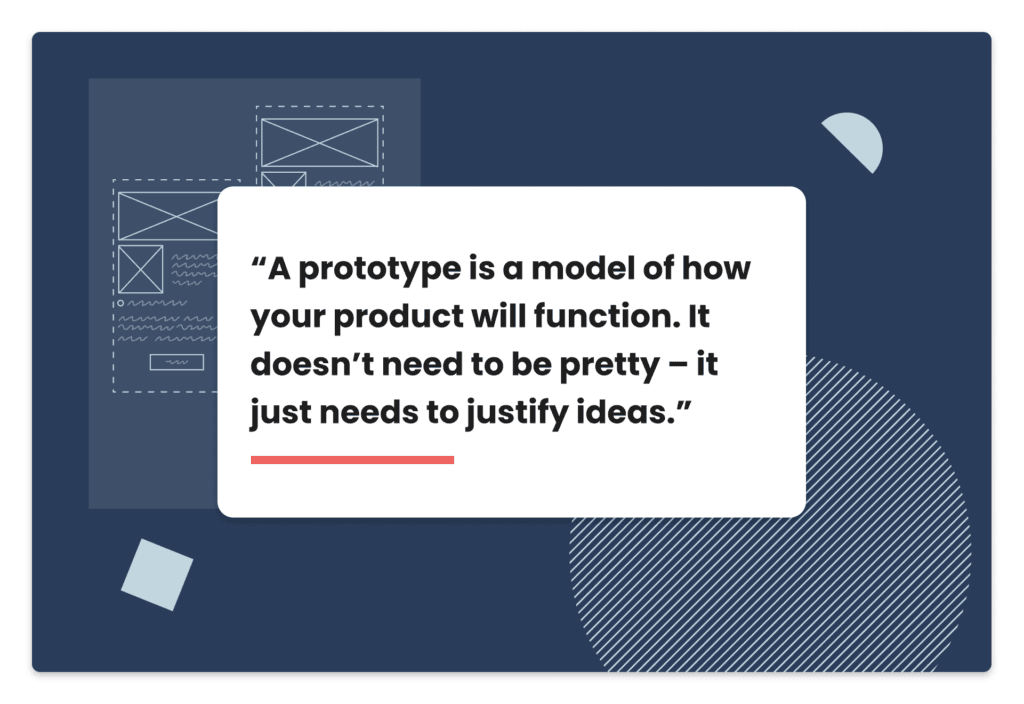Don’t Burn Time and Money - Prototype S!*t First
UI/UX Design
User Research
The world of product design is awash in stories of failed launches. From globally-recognised, multi-million dollar efforts to modest, small-scale startups, we’ve all heard about apps that have crashed and burned. After all, 99.5% of consumer apps fail. There are lots of reasons for these failures, but the overall theme of each is that most businesses just don’t do enough research up-front and fail to realise the needs of their users. The old adage ‘build it and they will come’ is dangerously untrue in digital product development. There’s too much competition and too little time to grab user attention. Just because you and your team think something is good, if users don’t like it, you’re dead in the water. A mediocre launch means that, at best, you’ll have to spend lots of time in a reboot phase, spending time and money to introduce updates that will hopefully win users back. At worst, it means having to scrap the entire project and start again. So how do we prevent a failed launch? How can a creative product studio or a business ensure that users will need their app before it ever launches? It’s all about prototyping – both the actual exercise of creating one, but also the research and ideas that feed into creating a prototype.
Challenge your processes
Lots of businesses view a prototype as one part of a journey, usually just a series of mock-ups in a tool like InVision to help outline the product’s look and feel and, potentially, some of its interactions. You should always focus on the product you’re trying to create, rather than viewing things as a production line. Defaulting to creating a prototype at X stage in your process makes it a box-ticking exercise that doesn’t actually add value. At KOMODO, we challenge our clients by asking questions based on their users and their requirements. We won’t create a set type of prototype in a template we’re comfortable with – we’ll only build a prototype if it is going to benefit the product. In most cases, some form of prototype is always worth it – but that might not mean you get to look at an interactive InVision model, as that’s just added time and cost that isn’t worth it for certain projects. To summarise what we mean here, you don’t want prototyping to become another ‘step’ of a pre-defined journey. Treat prototypes as opportunities to explore and address user needs. Some projects may only need a single prototype, while others may benefit from multiple prototypes at various stages. It’s all about what will best serve the product.
Put discovery into the heart of your prototype
Here at KOMODO, every project starts with a detailed discovery process that analyses users to draw out their behaviours and demographics, as well as their requirements. We’ll then use intelligence and creativity to suggest how a product’s features and functions best match those requirements. The goal at this early stage is to define a list of requirements that are justified by real behavioural research. In essence, this is the earliest ‘prototype’ – the requirements are a barebones map of the product ready to be ‘fleshed out’. Rather than simply following a brief or working through the motions, we assign the product’s functions and features to the specific user needs we have discovered.
Rethink who a prototype is for
A prototype is a model of how your product will function. It doesn’t need to be pretty – it just needs to justify ideas. However, most businesses are guilty of considering a prototype to be something only useful for showing to decision-makers so they can secure sign-off. How many prototypes have been mocked up just to get a stakeholder team to say, “yeah, that looks good”? Too many, we expect.

Instead, we need to treat a prototype as an early opportunity to gauge the genuine requirements of our users. That means inviting real users to interact with the prototype and gather feedback on how it looks, how it feels and whether it ‘works’ for their needs. The prototype should, at a minimum, focus on at least one tangible user requirement. In an e-commerce app, for example, rather than just mocking up a bunch of app screens to show off your design skills, create a basic framework for your check-out process and then test it out with real users.
A product-driven mindset
Our 3-3-5 approach is all about efficiency and commercial success. For our clients, prototyping is a flexible concept – some clients see multiple prototypes of varying complexity, while others may only need a single wireframe. The research behind the prototype and the value they add dictates how we use them. Working with intelligence means reducing your product’s overall time-to-launch and costs, ultimately delivering a product that generates more revenue.

Sign up to our newsletter
Be the first to hear about our events, industry insights and what’s going on at Komodo. We promise we’ll respect your inbox and only send you stuff we’d actually read ourselves.







